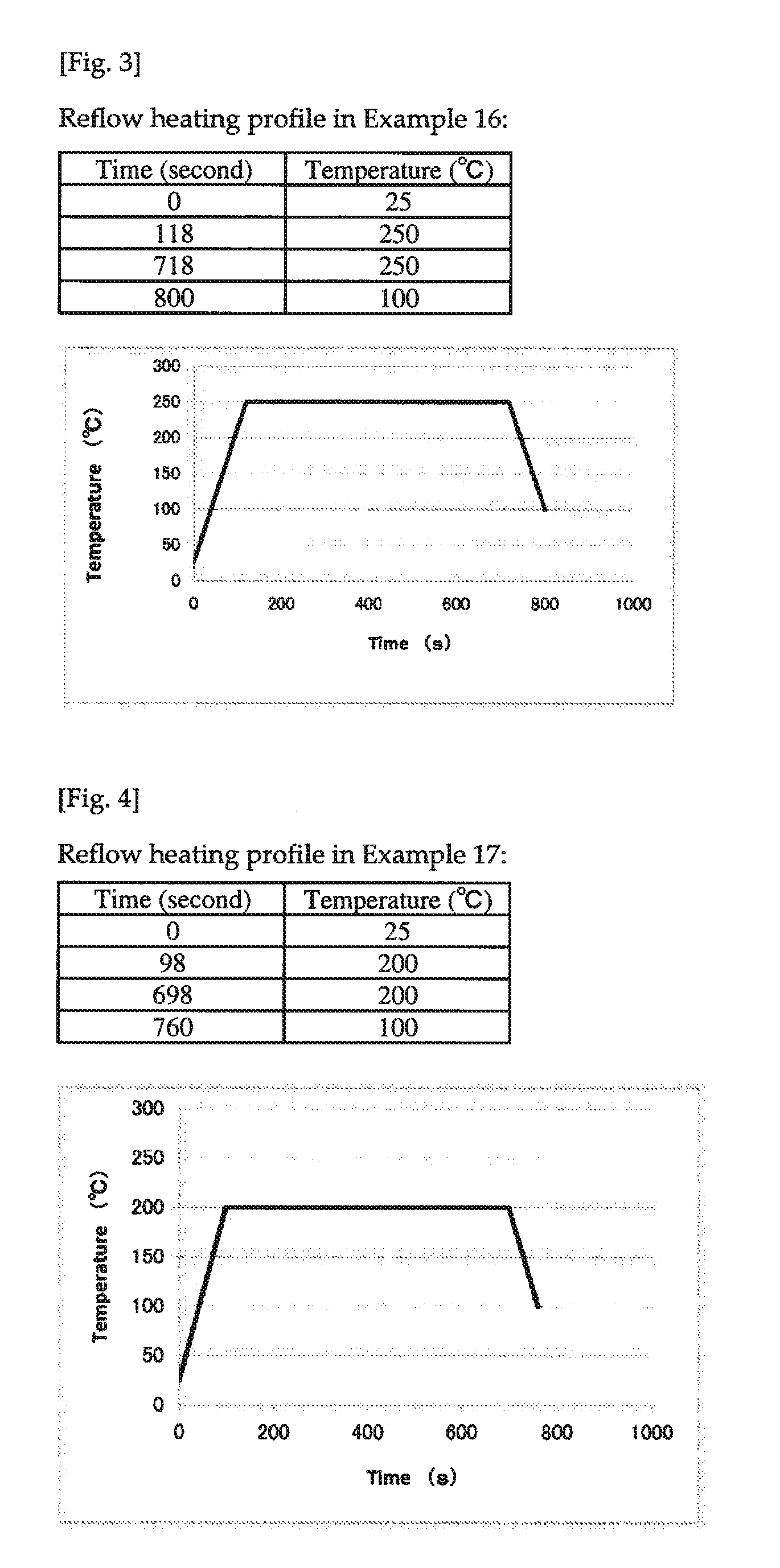Metal nanoparticle paste, electronic component assembly using metal nanoparticle paste, LED module, and method for forming circuit for printed wiring board
a technology of metal nanoparticles and electronic components, applied in the direction of printed circuit non-printed electrical components association, conductors, conductive pattern formation, etc., can solve the problems of insufficient bonding strength and brittleness of alloys, inability to apply solders to any electrical component or substrate, and inability to meet the requirements of electrical components, etc., to achieve the effect of preventing agglomeration of metal nanoparticles, low cost and mechanical strength
- Summary
- Abstract
- Description
- Claims
- Application Information
AI Technical Summary
Benefits of technology
Problems solved by technology
Method used
Image
Examples
examples
[0064]In the following section, the present invention is further described in detail on the basis of examples. The present invention is, however, not limited to the embodiments of the examples described below.
examples 1 to 11
Comparative Examples 1 to 6
[0065]Examples wherein the metal nanoparticle paste according to the present invention is used as an electrically conductive bonding material are described in the following section.
[0066](1) Components of the Metal Nanoparticle Paste:
Electrically Conductive Material:
[0067]Concerning metal nanoparticles coated with protective film (hereinafter referred to as “coated metal nanoparticles”):
Coated Metal Nanoparticles I:
[0068]tin nanoparticles coated with a protective film consisting of the sorbitan fatty acid ester of the formula (I-1), by the above activated continuous-interface vapor-deposition method
Coated Metal Nanoparticles II:
[0069]tin nanoparticles coated with a protective film consisting of the oleyl amine of the formula (IV-1), by the above activated continuous-interface vapor-deposition method
Coated Metal Nanoparticles III:
[0070]silver nanoparticles coated with a protective film consisting of the sorbitan fatty acid ester of the formula (I-1), by the...
examples 12 to 14
Comparative Example 7
[0084]In the following examples, the metal nanoparticle paste in accordance with the present invention was used as a wiring material.
[0085](1) Components of Metal Nanoparticle Paste
Electrically Conductive Material
[0086]Coated metal nanoparticles III and IV were the same as those described in the above examples wherein the metal nanoparticle paste was used as an electrically conductive bonding material. Metal nanoparticles VI were not coated with a protective film.
[0087](2) Process for Producing Metal Nanoparticle Paste Used as Wiring Material:
A predetermined amount of a cyclohexane dispersion containing 20% by weight of coated metal nanoparticles obtained by the above activated continuous-interface vapor-deposition method, was poured into an agate mortar, and the contained cyclohexane was completely volatilized by drying under reduced pressure. Thereby coated metal nanoparticles containing 20% by weight of the protective film component were obtained. Predetermin...
PUM
| Property | Measurement | Unit |
|---|---|---|
| mean primary particle diameter | aaaaa | aaaaa |
| mean primary particle diameter | aaaaa | aaaaa |
| temperature | aaaaa | aaaaa |
Abstract
Description
Claims
Application Information
 Login to View More
Login to View More - R&D
- Intellectual Property
- Life Sciences
- Materials
- Tech Scout
- Unparalleled Data Quality
- Higher Quality Content
- 60% Fewer Hallucinations
Browse by: Latest US Patents, China's latest patents, Technical Efficacy Thesaurus, Application Domain, Technology Topic, Popular Technical Reports.
© 2025 PatSnap. All rights reserved.Legal|Privacy policy|Modern Slavery Act Transparency Statement|Sitemap|About US| Contact US: help@patsnap.com



